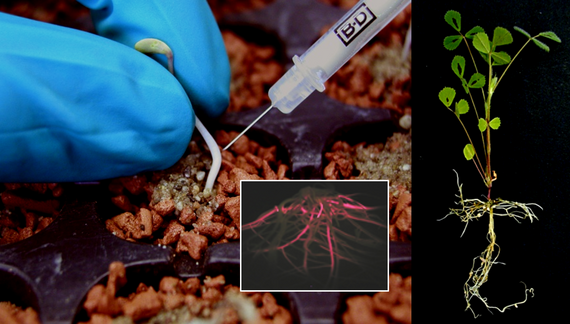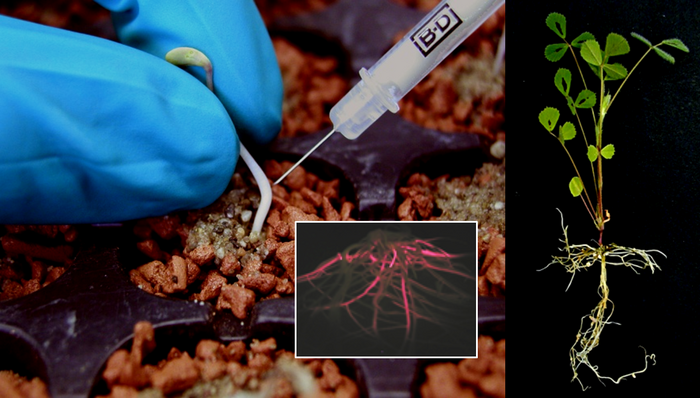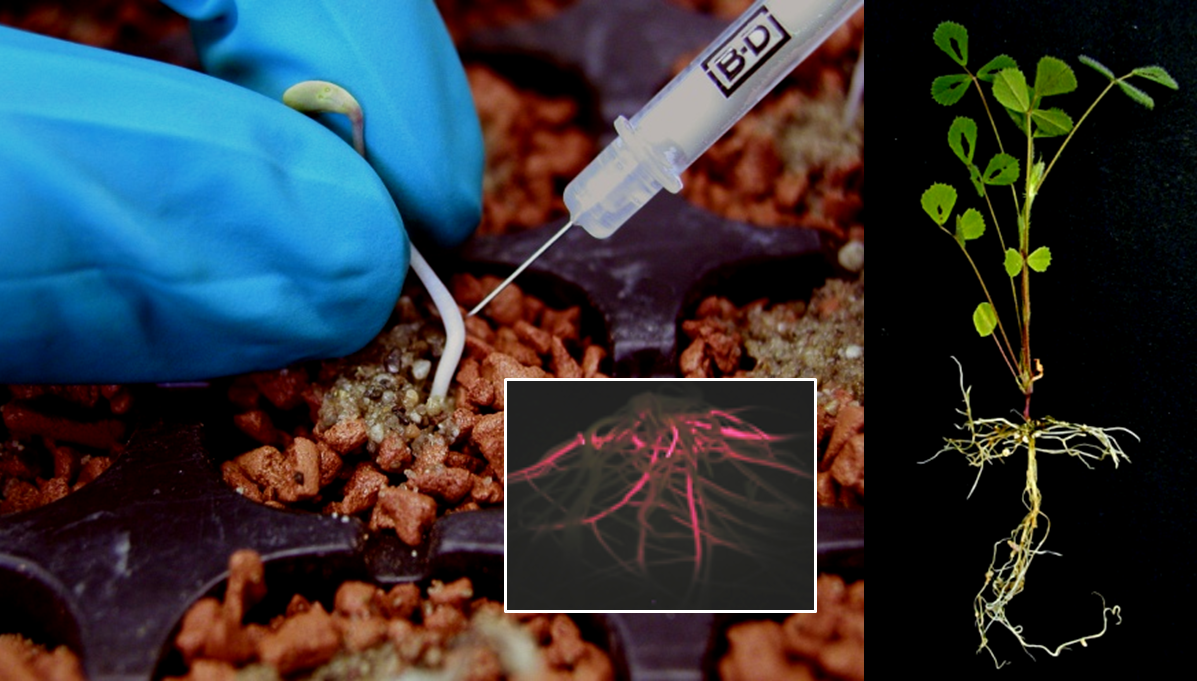Transgenic legumes



To study the function of genes activated during fungal colonization of arbuscular mycorrhizal roots, transgenic Medicago truncatula roots are generated via Rhizobium (Agrobacterium) rhizogenes-mediated gene transfer. Fully transgenic Medicago truncatula plants can be obtained by Rhizobium radiobacter (Agrobacterium tumefaciens)-mediated gene transfer, followed by somatic embryogenesis.
Generation of transgenic Medicago truncatula roots
Rhizobium (Agrobacterium) rhizogenes is capable of inducing hairy roots on Medicago truncatula hypocotyls by transferring the TL- or TR-DNA of its Ri (root-inducing) plasmid. The TL- and TR-DNAs encode gene products involved either in plant hormone (auxin) biosynthesis or in the release of auxin from inactive precursors. As a result, the auxin/cytokinin ratio increases, that way inducing root development. Due to the production of endogenous hormones, hairy roots are able to grow independently, e.g. in root cultures.
We are exploiting this natural gene transfer system to transfer reporter gene fusions into the hairy roots. After nodulation with Sinorhizobium meliloti or mycorrhization with Glomus fungi, the activity of reporter gene fusions in root endosymbioses can be studied histochemically. Similar to the expression of reporter gene fusions, RNAi or CRISPR/Cas9 constructs can be transferred to study the effect of an expression knockdown or the targeted mutation of a gene of interest on the formation of functional endosymbioses.
Several protocols for the generation of hairy roots on Medicago truncatula exist in the literature. Since these usually require sterile conditions, we developed a protocol to generate hairy roots in open pots. The composite plants can directly be mycorrhized and nodulated, allowing to study gene expression under more physiological conditions.
Generation of transgenic Medicago truncatula plants
Several protocols for the generation of transgenic Medicago truncatula plants have been developed in different laboratories over the past years. To generate transgenic plants, we used the somatic embryogenesis protocol developed for Medicago truncatula cv. R108. In our conditions, this protocol allowed the generation of transgenic plants of the T0 generation in appr. 6-8 months, followed by subsequent selfings to generate stable homozygous lines of the T1 and T2 generation.


